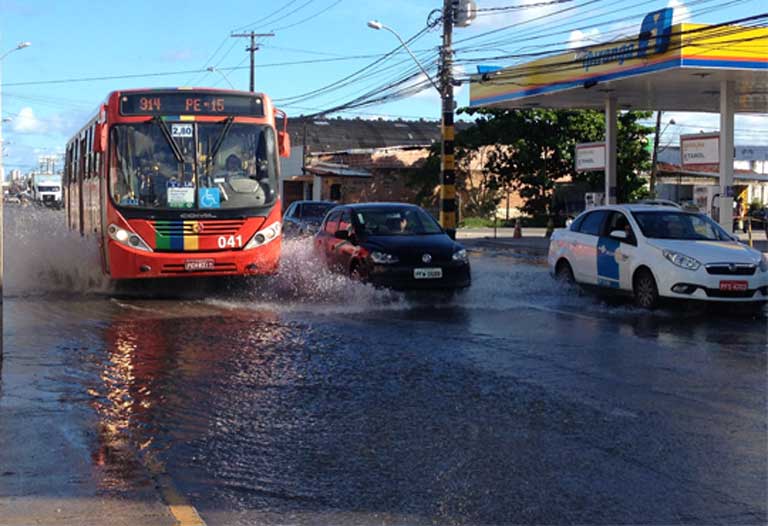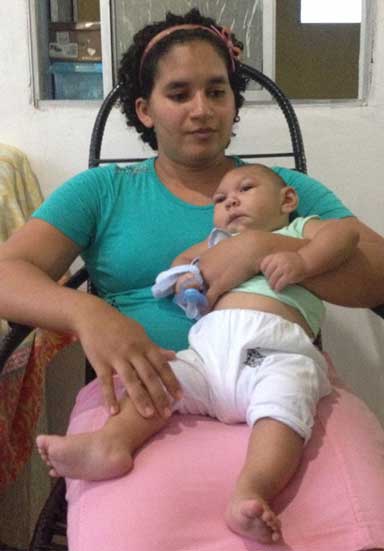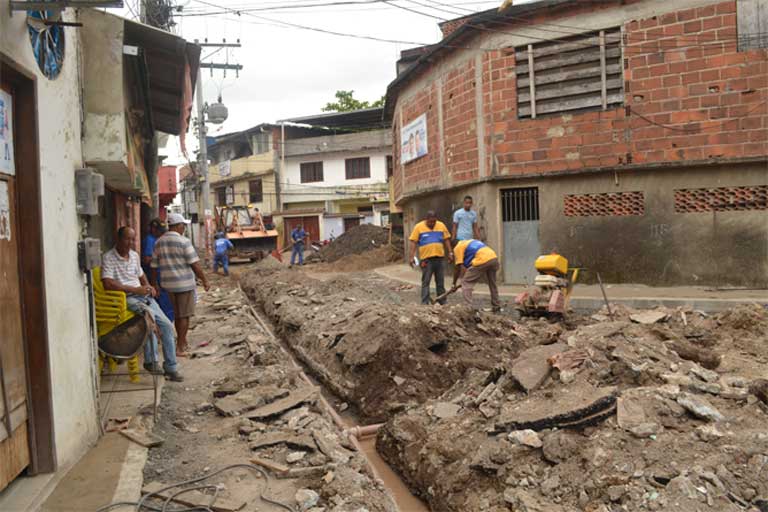- Public health experts have found a strong link between inadequate water and sanitation systems among the poor of the developing world, and major outbreaks of mosquito-borne diseases such as Zika, dengue, and chikungunya.
- Recife, a city of 3.7 million, is the epicenter of Brazil’s Zika virus outbreak. One factor driving the disease is that the city — built on a mangrove swamp — has deficient sanitation infrastructure, making the urban center a perfect breeding ground for mosquitos.
- Half of Brazil´s population has inadequate sewage services, and 10 percent have none at all. While Brazil has repeatedly proposed enhancing its water and sanitation systems, lack of funds, bureaucratic red tape and corruption have combined to stall improvements.
- Brazil has confirmed over 1,600 microcephaly cases linked to Zika. Whether the incidence of Zika, dengue, chikungunya and other mosquito-borne diseases rises or falls, partly depends on how well Brazil addresses basic public health infrastructure problems.

Maria Josefa de Oliveira stands in the doorway of her home in the Imbiribeira neighborhood of Recife — a city of 3.7 million in northeast Brazil. The bars on the window and door, and the hand-painted sign for her long-running in-home manicure business, ground de Oliveira firmly in this working class neighborhood on the edge of this majority Afro-Brazilian city.
Recife made headlines late in 2015 as the epicenter of the microcephaly crisis, and this part of the city has seen some of the highest numbers of Zika virus cases in Brazil — along with many cases of other mosquito-borne diseases.
But somehow, de Oliveira’s street has been largely spared.
“Here in the house, we haven’t had any cases [of Zika, dengue, or chikungunya] yet,” she declares. “As far as I know, very few people around here have gotten it. My brother, in the other street, he got dengue [fever]. And there is a girl who lives over there too, who I think about five months ago got chikungunya. But here, no.”
De Oliveira credits the low number of cases not to a miracle but to the newly installed sewer and drainage infrastructure system in her street. “Before it used to flood all over,” she explains. “But not any more. Now it’s 100 percent better.” Those floods left lots of standing water in which mosquitoes could breed and multiply.
Maria Josefa de Oliveira is lucky: while water drainage systems on her street have now been completed, the largest water infrastructure projects in the city have not — they’ve been stalled for more than six months.

Asked why the construction work in Recife has stopped, Dr. Guilherme Tavares, who works with SANEAR, the agency responsible for the city´s sanitation needs, responds: “Different factors produce the challenges. The main one is a lack of financial resources, and the tremendous bureaucracy around the contracting process for the projects.”
Installing universal sewer and water systems throughout the city would cost roughly US$3 billion, Tavares told Mongabay. That’s a staggering sum for any city to muster, no less one in the developing world — especially here in Brazil, a nation wracked by an ongoing and disastrous economic crisis.
He explains further that Recife is currently negotiating with the state to complete one of the major stalled sanitation projects, which raises the issue of Brazil’s intractable bureaucracy. The city’s sanitation contracts have been delayed for so long that they will soon expire, which will then require that they be renegotiated.
That’s good news for disease-carrying mosquitoes. Bad news for Brazilians, and maybe the world.
With the Rio Olympics fast approaching and tens of thousands of international visitors expected to attend, the global media have speculated that the games could allow Zika to more easily jump from Brazil to other nations. But public health experts point to a more fundamental problem: the lack of basic water and sanitation infrastructure, particularly in places like Racife, could be a major factor propelling the rise of the virus, and a major culprit behind its rapid spread.
In March, 2015, the UN’s Special Rapporteur on the human right to clean drinking water and basic sanitation, Léo Heller, issued a statement forcefully reminding the world that: “There is a strong link between weak sanitation systems and the current outbreak of the mosquito-borne Zika virus, as well as dengue, yellow fever and chikungunya. And the most effective way to tackle this problem is to improve the failing services,” to the poor in the developing world.
Disease-carrying mosquitoes thrive in the Venice of South America
Recife is an ideal mosquito breeding ground. Known as the Venice of South America, the low-lying city was carved out of a mangrove swamp where two rivers empty into the Atlantic Ocean, giving it an inherent drainage problem. The city’s Imbiribeira neighborhood is squeezed between the expensive condos of beachfront Boa Viagem and Recife’s aboveground metro. Although it seems land-locked, the neighborhood’s homes hide streams that almost make the area an island.
This watery problem has been compounded by the fact that Recife, like much of urban and rural Brazil, has relatively little water and sewer infrastructure.

Brazil´s 2014 National Plan for Basic Sanitation reported that half of the country´s population had precarious sewage service, while nearly 10 percent had none at all. As a result, many among the country’s poor wrestle every day with the difficulties of securing clean drinking water and disposing of sewage — a public health conundrum that offers a perfect incubator for insect-borne diseases.
In Recife, COMPESA, the company that handles sewage and water services, told Mongabay that while just 48 percent of the city itself has sewer hook ups, that percentage drops to 33 percent when considering the entire metropolitan region, and falls even lower when looking at the whole state of Pernambuco.
Data from the federal Ministry of Cities, which oversees sanitation issues, show that cities in Brazil´s wealthier, industrialized southeast — places like Rio where the Olympics will be held — tend to have higher percentages of sewer and water hook ups than its poorer, northern regions.
Still, according to Rio de Janeiro’s sewer and water company, CEDAE, nearly half the sewage for the state of Rio de Janeiro remains untreated when it empties into Guanabara Bay where Olympic sailing and rowing events will take place.
Though inadequate sanitation isn’t the only driver of Zika, the Brazilian Ministry of Health reports that the northeastern state of Pernambuco, of which Recife is the capital, had the highest cumulative number of microcephaly cases in the nation in 2014. The northeastern region reported four times more cases than the wealthy southeast where Rio is located.
Failed mosquito control program
The Aedes Aegypti mosquito has been identified as the primary vector behind the spread of the Zika virus, to which the World Health Organization (WHO) has linked the outbreak and surge in microcephaly cases in Brazil.
However, a second possible Zika vector has been identified. Dr. Constancia Ayres, a researcher at the FioCruz Institute in Recife, has found that the common Southern Household Mosquito — in the Culex genus and a known vector for the West Nile Virus — is also capable of carrying Zika, and Zika-infected Culex mosquitoes have been found outside of the lab.
Dr. Lia Giraldo, a physician and public health researcher now retired from FioCruz, finds fault with Brazil’s basic approach to mosquito control, which emphasizes pesticide use, but doesn’t focus hard enough on improving water and sanitation infrastructure. “We’re really concerned because the World Health Organization classified malathion to be cancer-causing, and it’s being used in extremely high quantities in the fumigation against the Aedes Aegypti.”
She added that pesticides aren’t solving the problem: “For 30 years this model has been used, and we haven’t managed to control mosquitoes. So we have comprehensive proof that this model doesn’t work. The mosquito, which used to be fairly localized, is now present all over Brazil.”
Giraldo also contends that mosquito-borne disease epidemics are becoming more frequent in the country, with a higher morbidity rate.
Politicians don’t invest in infrastructure you can’t see
José Martins de Oliveira has lived in Rio de Janeiro´s Rocinha favela, a working class, unplanned community, for almost half a century. An active member of a citizens’ rights group known as Rocinha Sem Fronteiras — an organization that works with residents to learn about their rights and responsibilities as citizens — he says that the community’s fight for basic sewer and water infrastructure dates back to the early 1980s. Still, nothing gets done, even though people demand action.
“We have 120 people [in attendance] when we have meetings on sanitation,” he told Mongabay. “Ordinarily we get thirty. People want the drainage canals to be covered, [and] all the garbage collected. When you’ve got channeled drains, health comes along with them. If you don’t have sanitation, you don’t have health,” de Oliveira told Mongabay.

Rocinha has 23 open sewage streams lining its streets, yet de Oliveira and others agree that sewer and water infrastructure rarely gets much government attention in Brazil because politicians don’t think it will boost their popularity.
The federal government allocated funds for sewer and water infrastructure in the community between 2008 and 2012 through its PAC (Accelerated Growth Program). “But the state government built things that are visible. For example, they built an overpass, which is very nice, obvious, but they tore down an existing one to build another,” de Oliveira explains.
“The main drainage canal was supposed to be channeled; they didn’t channel it,” he complains. “When it rains, since it’s not channeled, the ditch floods. The most important thing for the community is sanitation. Sanitation is underground, though, right? They [Politicians] don’t do that because it’s not visible.”
Public works projects came to a halt altogether in Rocinha in 2011, shortly after the 2010 national elections put Dilma Rousseff in power, de Oliveira explains. Any infrastructure projects that were in progress then remain incomplete and stalled now. Earlier this year, the Public Ministry filed a lawsuit against the state to try to move the promised sanitation projects forward.
A mosquito isn´t stronger than an entire country
Social critics say that there are two primary reasons that Brazil, the largest economy in South America, has failed so badly at meeting the challenges of providing basic water and sewer infrastructure to its poorest citizens. The first reason is the already mentioned need for infrastructure projects to be big and expensive — critics claim that the government is more willing to fund a giant hydroelectric dam in the Amazon than a city storm drain. The recent Lava Jato police investigation has spotlighted a second problem: corruption is rife in the construction industry, and the bigger the project, the bigger the opportunity to skim off the top.
This leaves many of Brazil’s low-income households unable to rely on regular access to running water. So during the limited hours when municipal water is available, people stockpile it in buckets or any open container they can find, inadvertently providing breeding grounds for mosquitoes within their homes. These conditions, researchers point out, affect almost exclusively low-income communities, which are disproportionately Afro-Brazilian.
“We can engineer sterile mosquitos or use sophisticated Internet tools to map data globally,” said Léo Heller in his 2015 UN statement, “but we should not forget that today a hundred million people in Latin America still lack access to hygienic sanitation systems, and seventy million people lack piped water in their places of residence.”

One study ranked Rio de Janeiro 37th among Brazilian cities for its water and sanitation infrastructure. These conditions have prompted a government campaign to encourage people to eliminate standing water from their homes. Ads on buses and billboards across the nation sport an illustration showing a cartoon insect with the slogan: “A mosquito isn’t stronger than an entire country.” Unfortunately, say public health experts, advertising campaigns are no substitute for efficient water and sanitation infrastructure.
The hydro-social cycle
In 2014, President Dilma Rousseff’s government announced a National Basic Sanitation plan that mapped out a strategy that would invest roughly $508 billion Reals (US$151.8 billion) over two decades to ensure that all Brazilians would enjoy sewer and water hook ups by 2033.
But since the plan’s launch, the country has been hit hard by a severe economic downturn partly prompted by a collapse in oil and commodity prices, then exacerbated by the massive Lavo Jato corruption scandal and Rousseff’s pending impeachment trial. The government also shouldered substantial costs to host the 2014 World Cup and the 2016 Olympics, costs that a series of investigations are revealing were boosted by endemic corruption.
For Ana Britto, who coordinates a Rio de Janeiro research group that focuses on urban water issues, the connections between the country’s finances and its basic infrastructure fall into a “hydro-social cycle.” She and other researchers argue that: “the circulation of water is fundamentally tied to the circulation of money and capital. Similar to other goods and urban services, the circulation of water is part and parcel of the political economy that structures power relations and gives shape and coherence to the urban space.”

In Duque de Caxias, a Rio suburb with nearly a million residents, these so-called “power relations” have left many without even the most basic of services. The suburb “has homes that only receive water every 15 days, or once a week. There’s no regularity in the water supply like there would be in any normal country,” Britto told Mongabay. “In the southern part of Rio de Janeiro [where some of the wealthiest neighborhoods are found] you have regular access”. But in other areas, you don’t. Especially in the periphery, in poorer areas, you don’t have this universal access.”
Britto questions whether Brazil’s multi-billion dollar National Basic Sanitation plan will live up to its promise of providing basic sanitation infrastructure for all, especially in light of the country’s economic and political woes, and its endemic corruption. Britto, echoes de Oliveira’s view regarding the lack of political will: “There’s a result that you see in the long-term, when there’s a reduction in a series of diseases that are water-borne,” he says. “So it’s a long-term result [that needs to be strived for], but Brazil operates very much from a short-term perspective.”
Brazil has confirmed more than 1,600 cases of microcephaly linked to Zika so far. How many cases occur in the future, and whether the incidence of Zika, dengue, chikungunya and other mosquito-borne diseases will rise or fall, could depend on the vigor with which Brazil addresses its basic public health infrastructure problems.
